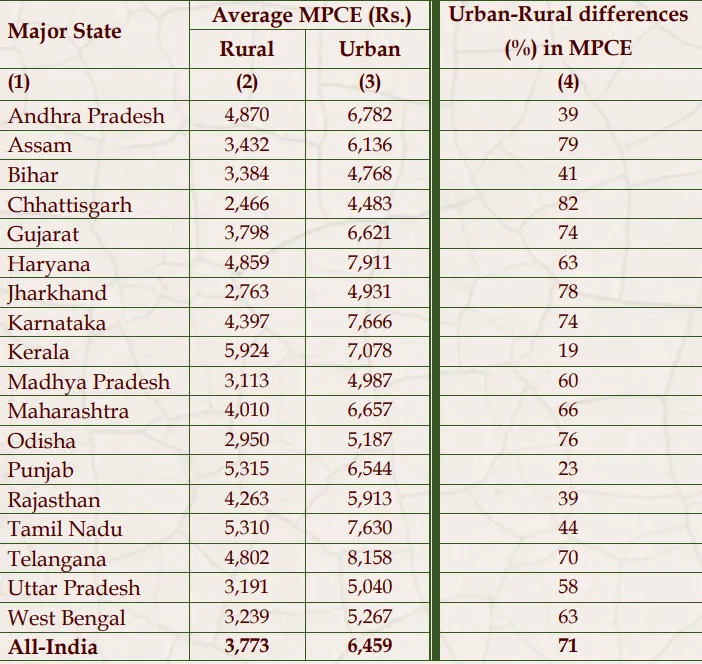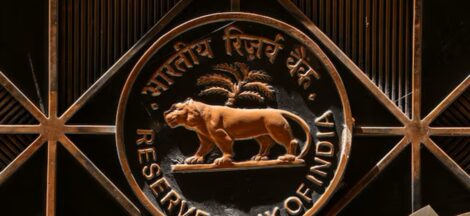NEW DELHI: Among 18 major states, the difference between urban and rural average monthly per capita expenditure (MPCE) of households is the lowest in Kerala, followed by Punjab, Andhra Pradesh (AP) and Bihar, data from the Household Consumption Expenditure Survey (HCES) 2023-24 report released on Thursday showed.
The difference between urban-rural MPCE was merely 18% in Kerala in 2023-24, and in Punjab at 27%. In AP and Bihar, the difference stood at 35% and 38%, respectively.
In absolute terms, the urban MPCE in Kerala was at Rs 7,783 and rural MPCE was at Rs 6,611, in 2023-24; and in Punjab at Rs 7,359 and Rs 5,817. The urban MPCE in Bihar stood at Rs 5,080 – the lowest among major states – and the rural MPCE stood at Rs 3,670.
In absolute terms, urban MPCE was the highest in Telangana (Rs 8,978) followed by Haryana (Rs 8427), and Tamil Nadu (Rs 8175). As for rural MPCE, Kerala topped, followed by Punjab.
The highest gap, meanwhile, within the urban and rural MPCE, in 2023-24, was in Jharkhand at 83%, followed by Chhattisgarh at 80%, Assam at 79%, and Maharashtra at 78%. In 2022-23, the highest gap existed in Chhattisgarh at 82%, followed by Assam (79%), Jharkhand (78%), and Odisha (76%).
Among the 18 major states, there has been a decline in urban-rural rural gap in 11 states in 2023-24 from the level of 2022-23, said the statistics ministry in the report.
The report further showed that in real terms, the average MPCE of households increased by 3.5% each, year-on-year, in 2023-24 in both urban and rural areas. While on a nominal basis, the rural MPCE rose by 9.2% and urban by 8.3%.
On cereals’ consumption, the report said that the monthly per capita cereal consumption (MPCC) by rural households reduced to 9.35 kg in 2023-24 from 9.61 kg in 2022-23; and in urban households, the consumption fell marginally to 8.02 kg from 8.05 kg. In 2011-12, the MPCC stood at 11.23 kg for rural households, and 9.32 kg for urban households.
Additionally, consumption inequality, both in rural and urban areas, has declined from the level of 2022-23, showed the data. The Gini coefficient has declined to 0.237 in 2023-24 from 0.266 in 2022-23 for rural areas and to 0.284 in 2023-24 from 0.314 in 2022-23 for urban areas.
In 2023-24, in rural India, food accounted for about 47% of the value of the average rural Indian households’ consumption. Within food, the contribution of beverages, refreshments and processed food was the highest (9.8%), followed by milk & milk products (8.4%) and vegetables (6%). Whereas, in urban India, the contribution of the three groups stood at 11.1%, 7.2%, and 4.1%, respectively.
Source: The Financial Express




 BJP Leader Challenges Delhi High Court Ruling in Defamation Case
BJP Leader Challenges Delhi High Court Ruling in Defamation Case 